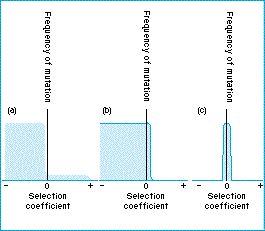Selection coefficient

The coefficient of selection is usually taken to be a measure of the extent to which natural selection is acting to reduce the relative contribution of a given genotype to the next generation.
Denoted as s, the selection coefficient is a number between zero and one. If s = 1, selection against the genotype is total, and it makes no contribution to the next generation. If s = 0, the genotype is not selected against at all. In this case gene frequencies will lapse into the Hardy-Weinberg case, unless there is neutral drift.
A slightly different notation for selection coefficients is employed for the study of neutral drift. When interested in whether one form of a molecule has a higher, lower, or equal, fitness than another form, it may be more convenient to talk about selection coefficients that are +, 0, or -. A positive selection coefficient means natural selection favors the variant; negative means it is selected against; zero means it is neutral.
Figure: different theories postulate different frequency distributions for the rates of mutation with various selection coefficients. (a) According to the selectionists, exactly neutral mutations are rare and enough favorable mutations arise to account for all molecular evolution. (b) Neutralists believe more neutral, and hardly any selectively favored mutations arise. (c) The theory of pan neutralism, according to which all mutations are selectively neutral.
| Next |



